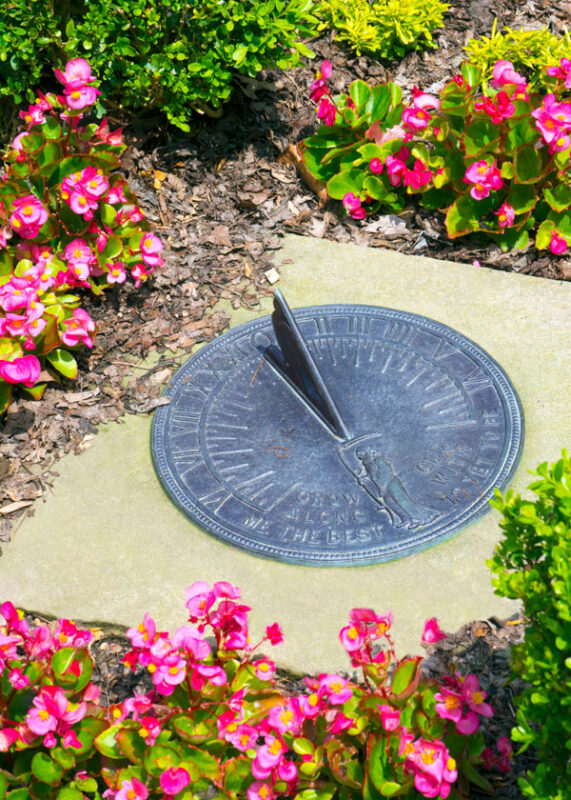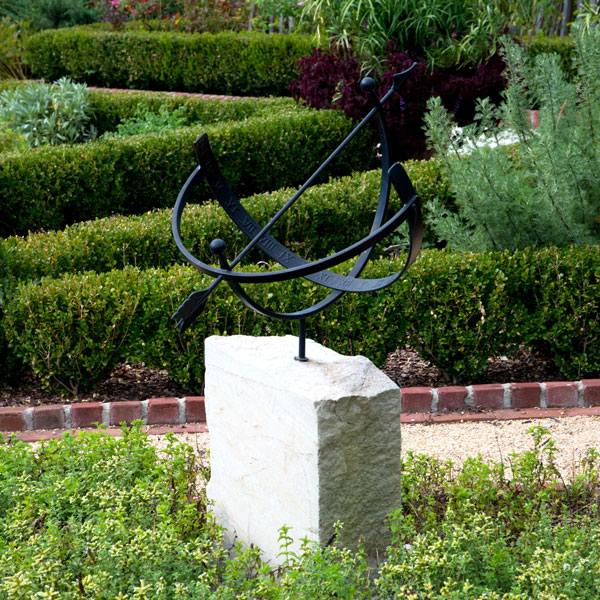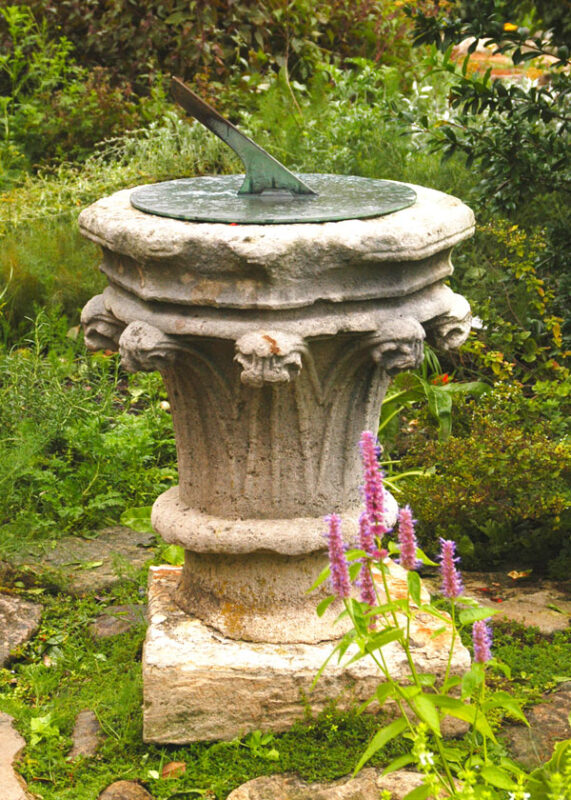Good Time for Sundials to Shine
(Before I go any farther, let me mention that most of the photos I’ll share with you are not from the Sperry home landscape. They’re from gardens I’ve visited over the years. Theirs are much more special than most of mine.)
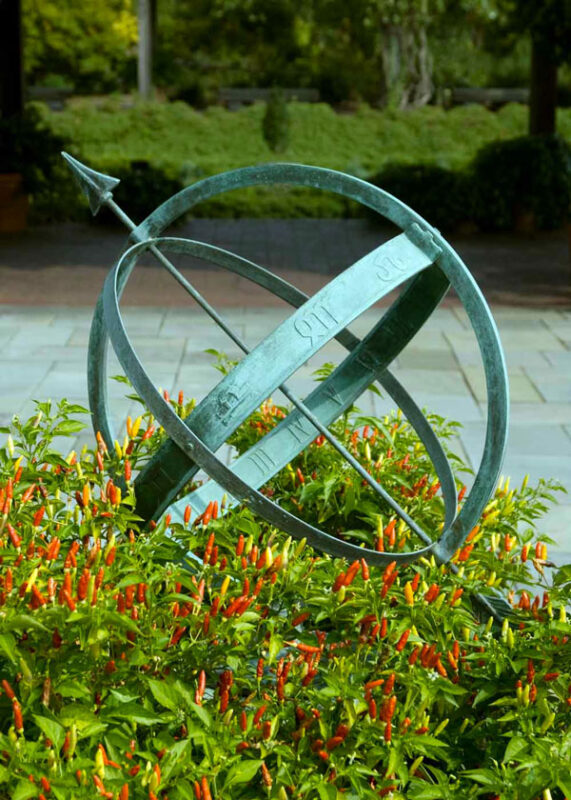
There’s a lot more to sundials than just grace, beauty, and function. They pack some pretty incredible science – math, astronomy, physics. And the people who did all the designing lived hundreds of years before computers, calculators, and even slide rules. Where were those folks when I needed to program the new remote for the TV!
Well, we’re not going there. You can keep reading. No formulas of the earth’s axis versus the angles of the dials. I’m going to stick to the beauty and tranquility sundials bring to their gardens and why you need to have one or two, too.
Sundials are an almost permanent form of garden art. They remind us that the sun has been a part of our lives for millions of years, and that a sundial will count the time for all who pass by. Whether it’s a massive brass dial sitting atop a huge decorative stone or some kind of architectural design with rings upon rings, the sundial will be the focal point of its “room” in your garden. Properly chosen and placed it will be the centerpiece of activities and the gathering place for conversations.
Primitive sundials consisted of nothing more than sticks plunged into the soil. As the sun moved across the sky, its progress could be followed by the shadows it cast onto the ground.
Egyptians took it up a few steps when they created flat metal plates to take the place of the ground. They inscribed the hours into the metal so times could easily be read. However, they soon learned that the accuracy of their dials depended on their latitude, and that’s where the complicated math came into the picture.
Sundials evolved in style and design. Wall dials were made to hang vertically. Glorious armillary dials showed intricate metal-working skills. Dials that rested at odd angles required still more sophisticated math, but the early dial builders were up to the task. Pocket sundials even allowed travelers to stop, set up their dials, and determine how much time they had left in their days.
Sir Isaac Newton discovered that a small mirror could be placed on a sunny windowsill. If it were perfectly horizontal it would reflect sunlight onto the ceiling. If the ceiling were also perfectly horizontal, a reverse horizontal dial would be cast onto the ceiling. By marking the ceiling carefully, the time could be told simply by looking up in the room.
The gnomon is the part of the sundial that casts the shadow. It may be a thin wire, a straight-edged piece of metal, or even that old stick in the ground, but it’s what casts the shadow and allows you to determine the time. The edge of the gnomon that actually is used in determining the precise time is called the style.
There are a couple of important details about sundials and their accuracy. The gnomon must be on a precise north-south axis, and the angle of the gnomon to the horizontal surroundings must be equal to the geographical latitude.
There are sundials where the gnomon is perforated in a way that you actually read the time by looking for the bright sunlight on the plate, instead of by reading the shadow. Some gnomons have been punched with Arabic numerals, so that you can actually read the hours and have a fairly good estimation of the precise time.
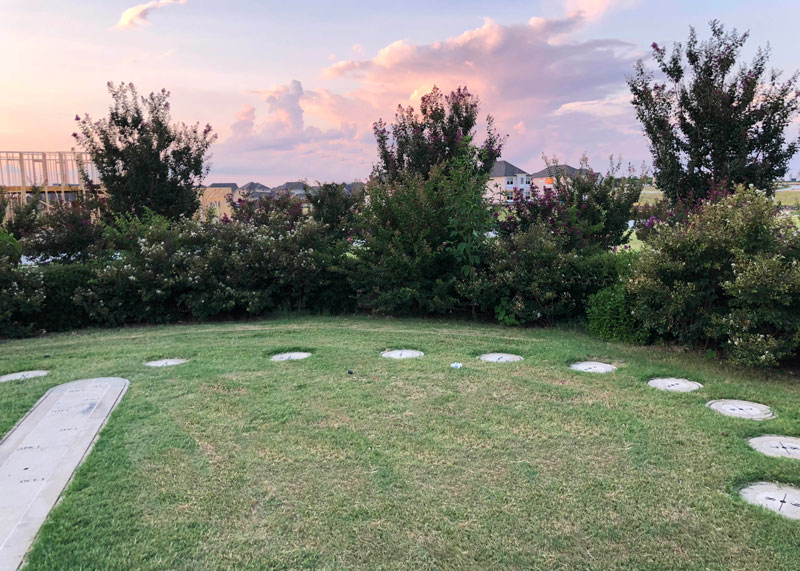
But one of the most unusual sundials I’ve ever seen was also one of the simplest. It consisted of a long north-south piece of concrete marked with the months of the year. It was surrounded by a semi-circle from due-east to due-west of 13 evenly spaced markers to indicate the hours from 7 a.m. until 7 p.m. As you walk onto the piece of concrete and stand on the day’s approximate date, you become the gnomon. Your shadow cast onto the appropriate marker tells you the time.
Of course, the wider you are, the less accurate the time. If it’s inaccurate, perhaps it’s time to put your gnomon on a diet.

